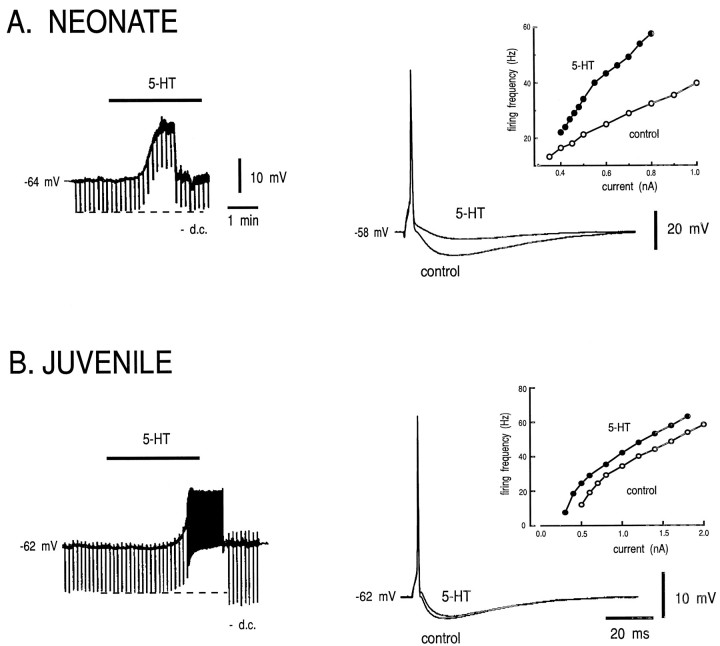Fig. 2.
5-HT inhibits the AHP in neonatal HMs, but not in juvenile HMs. The effect of 5-HT on membrane potential and firing behavior was tested in neonatal (A) and juvenile (B) HMs. Left, Membrane potential was recorded before and during application of 5-HT (100 μm) via the perfusate; downward deflections in the trace represent membrane voltage responses to constant amplitude current pulses used to monitor input resistance (RN). During the response to 5-HT, current was injected to return the membrane potential to control levels (−DC). In the neonate (P5), 5-HT caused membrane depolarization with little change in RN. In the juvenile (P21), 5-HT caused membrane depolarization that was associated with a substantial increase in RN. Right, Action potentials were evoked with a brief (2 msec) current pulse before and during bath application of 5-HT. Membrane potential preceding the current pulse was adjusted to the same value in control and 5-HT by current injection. In the neonate, 5-HT caused a marked reduction in the amplitude of the AHP. By contrast, 5-HT had little effect on the AHP in the juvenile HM. Insets, The steady-state firing frequency-injected current relationship (f–Icurve) was obtained in control and then in the presence of 5-HT by using rectangular current pulses of increasing amplitude. In the neonate, 5-HT caused a clear increase in the slope of thef–I curve with an increase inFmin. In the juvenile, however, 5-HT caused a parallel leftward shift in the f–I curve. All records are from the same neonatal and juvenile HM; action potentials are truncated.

